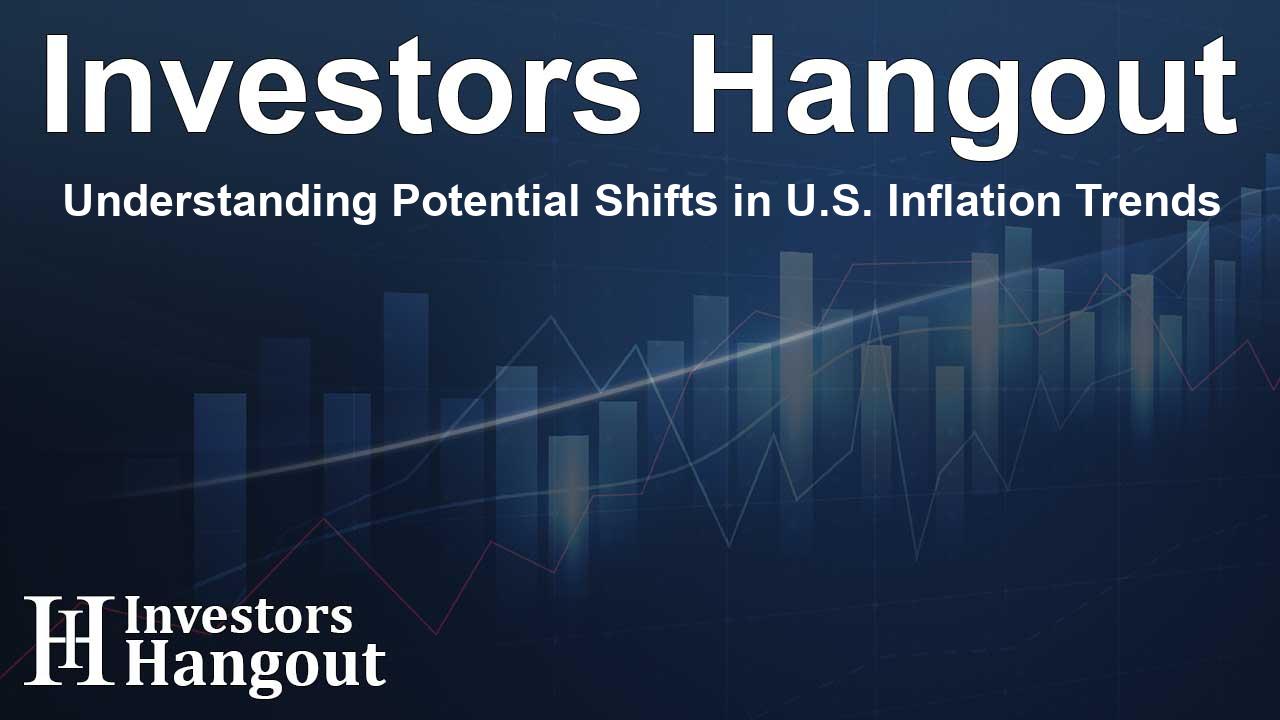Understanding Potential Shifts in U.S. Inflation Trends

Navigating the Current U.S. Inflation Landscape
Inflation in the U.S. has become a pressing issue, reaching levels that haven't been seen in decades. Investors are keeping a close watch, considering the possibility that inflation might fall below the Federal Reserve's target of 2%. As the economic environment evolves, this reality is gaining more attention.
Market Responses to Inflation Data
Recent employment data indicated a slowdown in payroll growth. Although wage growth saw a slight uptick, the unemployment rate fell. This complexity influenced market reactions, resulting in a significant drop in bond yields and a notable steepening of the yield curve.
Current Economic Indicators
The swift changes in financial markets suggest that traders are leaning towards expectations of disinflation rather than prolonged inflation. For example, futures markets are predicting potential rate cuts by the Fed, signaling a shift in outlook towards a less inflationary scenario.
Global Disinflationary Trends
Disinflation is not solely an issue for the U.S.; many regions, including parts of Europe and emerging markets, are experiencing falling prices. China's ongoing battle with deflation adds another layer to this discussion, emphasizing that global trends could unexpectedly influence the U.S. economy.
Impact of Commodity Prices
Commodity prices, especially crude oil, have seen significant declines, with current prices hitting lows not observed since late 2021. The recent drop of about 25% in oil prices compared to last year suggests a potential downward pressure on overall inflation rates in the future.
Assessing the Balance of Growth Risks
Even with falling commodity prices and signs of disinflation, the U.S. economy shows remarkable resilience. Sectors like services and retail are continuing to grow, with retail sales exceeding expectations. Forecast models even indicate robust GDP growth, suggesting a positive undercurrent in the economic narrative.
Indicators of Ongoing Inflation
However, challenges persist, particularly regarding shelter inflation, which remains steady at 5%. Such persistent factors indicate that inflation expectations could remain elevated. The longer inflation stays above the target, the greater the risk that consumer inflation expectations will solidify at higher levels.
Potential Shifts Ahead
Historically, the Federal Reserve has faced significant hurdles in bringing inflation down to its target, especially following the Global Financial Crisis. Key factors contributing to these challenges, such as demographic changes, appear to be ongoing. There is interest in whether technological advancements can genuinely stimulate growth or inadvertently suppress prices.
Globalization and Future Inflation Patterns
As we consider these dynamics, it’s worth reflecting on how globalization, fluctuations in energy markets, and rising protectionism may shape inflation trends. In this context, the idea of inflation falling below the Fed's forecast may seem difficult to accept, yet it is increasingly becoming a feasible scenario.
Frequently Asked Questions
What is happening with U.S. inflation trends?
There are indications that inflation may fall below the Fed's target of 2%, influenced by various economic changes and declines in commodity prices.
How have financial markets responded to recent inflation data?
Financial markets have reacted with drops in bond yields and an increased likelihood of rate cuts by the Fed, reflecting expectations for lower inflation.
What global factors are influencing U.S. inflation?
Disinflationary pressures from regions like Europe and China are affecting U.S. prices, highlighting the interconnected nature of the global economy.
Why are commodities like oil significant in this context?
Commodity prices, particularly crude oil, are at significant lows, which could lead to a reduction in overall inflation levels as they play a crucial role in price calculations.
What does the future hold for inflation expectations?
While current trends indicate a shift towards lower inflation, various factors, including ongoing economic activities and demographic trends, could influence these expectations.
About The Author
Contact Evelyn Baker privately here. Or send an email with ATTN: Evelyn Baker as the subject to contact@investorshangout.com.
About Investors Hangout
Investors Hangout is a leading online stock forum for financial discussion and learning, offering a wide range of free tools and resources. It draws in traders of all levels, who exchange market knowledge, investigate trading tactics, and keep an eye on industry developments in real time. Featuring financial articles, stock message boards, quotes, charts, company profiles, and live news updates. Through cooperative learning and a wealth of informational resources, it helps users from novices creating their first portfolios to experts honing their techniques. Join Investors Hangout today: https://investorshangout.com/
The content of this article is based on factual, publicly available information and does not represent legal, financial, or investment advice. Investors Hangout does not offer financial advice, and the author is not a licensed financial advisor. Consult a qualified advisor before making any financial or investment decisions based on this article. This article should not be considered advice to purchase, sell, or hold any securities or other investments. If any of the material provided here is inaccurate, please contact us for corrections.
